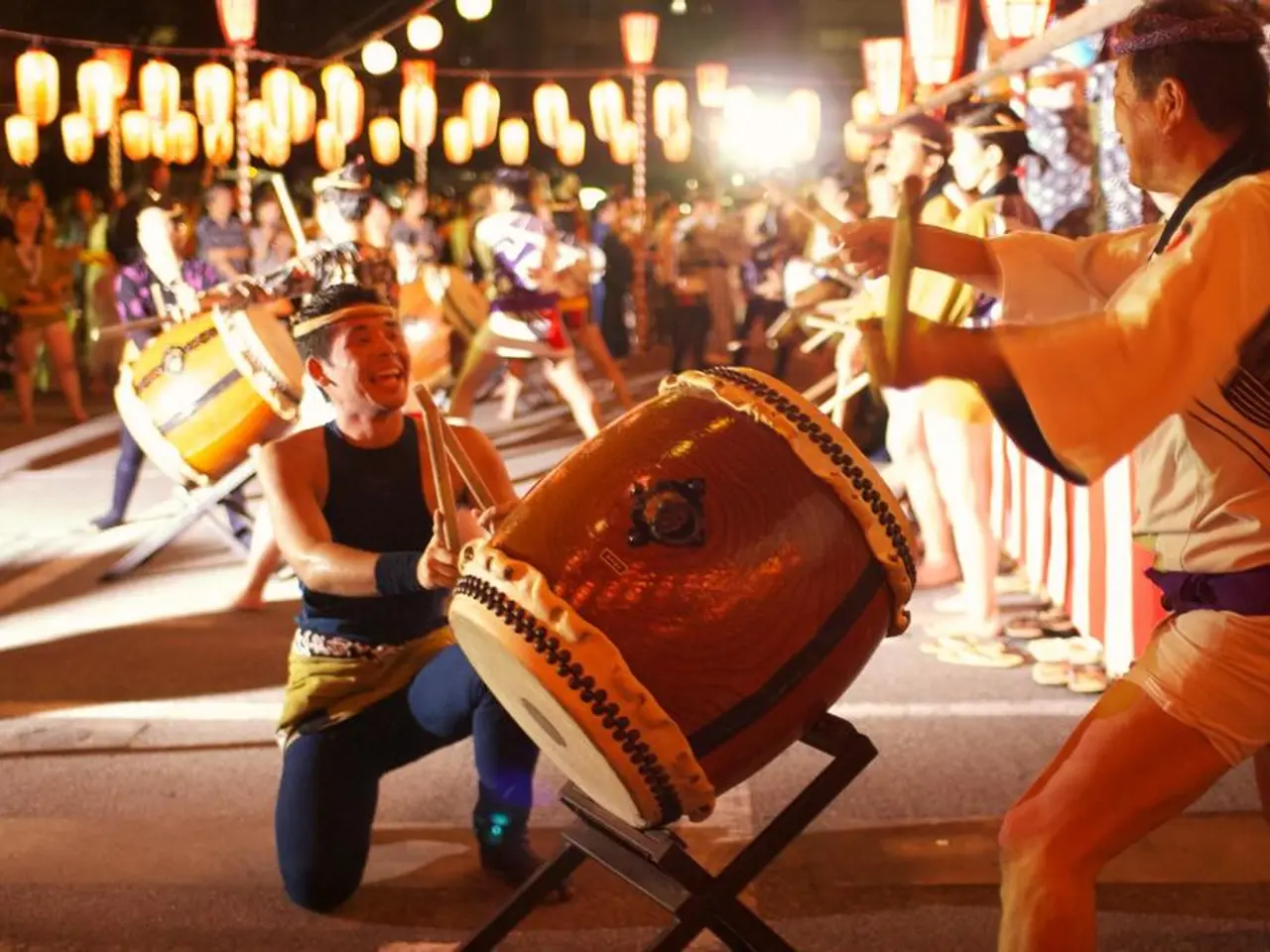Creating a Festive Centerpiece: A Guide to Crafting a Christmas Cloche for a Stunning Party Table Display
As the year-end season approaches, finding vibrant flowers for Christmas decorations can be a challenge. However, this year, consider stepping away from traditional showy blooms and exploring creative and natural floral arrangements using less common ingredients. Here are some ideas that blend texture, greenery, and unconventional elements to create visually interesting and authentic arrangements.
To start, use natural fillers and greenery as the base. Incorporate seasonal foliage like ferns, eucalyptus, baby’s breath, or wax flowers to add depth and a lush feel. These smaller, textured plants create a natural and inviting foundation.
Incorporate unique botanical accents and wildflowers like Aquilegia (columbines) with delicate nodding flowers and lacy foliage, or Ammi Visnaga (Egyptian Queen Anne’s Lace) for airy, fine-textured white clusters. These less common cut flowers bring a cottage garden charm and ethereal beauty to your arrangements.
Modern arrangements often integrate fresh succulents, paired with festive ribbons, berries, and pinecones for a natural but contemporary Christmas look. Succulents provide a structural and tactile contrast to traditional flowers while lasting longer.
Incorporate elements from nature like pinecones and dried botanicals. These add organic warmth and seasonal spirit without needing bright, showy flowers. Pinecones combined with ribbons and berries give a cozy, woodland-inspired aesthetic, ideal for Christmas centerpieces.
Try botanical arrangements in unique containers with oasis foam wrapped in parchment paper. This technique allows for cost-effective and easy-to-make centerpieces where you can insert a mix of greenery, uncommon flowers, and natural elements in creative bottle arrangements or glass vases, giving a rustic and personalized feel.
When placed under glass, these arrangements become magnified and framed, creating a fairytale-like centerpiece. A flower frog is secured into the bottom of the dish using florists' putty. No specific rules are given for the placement of ingredients in the design. The arrangement's shape and coverage should be carefully considered before placing the dish on the cloche base.
Subtle hues in blues and greys are found in spruce, juniper, and cedar. Mosses, pine cones, rose hips, crab apples, and lingustrum berries add color to winter arrangements. Staggering ingredients between the tallest and lowest points allows for contemplation of each stem’s length, shape, and fullness. The glass dome is gently shimmy-moved to ensure none of the stems get bent or trapped.
A simple Christmas centerpiece can be made using minimal ingredients, such as tiny stems, branches, mosses, leaves, and found items. Creating arrangements during this season involves using less obvious, often overlooked flowers like hellebores and snowdrops, which are tenacious little flowers that grow under harsh conditions.
In conclusion, embracing textured greenery, rare or wildflower choices, succulents, natural accents, and rustic presentation techniques can result in arrangements that feel authentic, fresh, and visually interesting without relying solely on traditional bright flowers.
- To make a unique Christmas centerpiece, consider using uncommon flowers such as Aquilegia (columbines) or Ammi Visnaga (Egyptian Queen Anne's Lace), paired with natural fillers and greenery like ferns, eucalyptus, or baby’s breath.
- For a contemporary yet organic look, incorporate modern elements like fresh succulents, pinecones, and festive ribbons into your arrangements, providing a structural contrast to traditional flowers and extending their lifespan.
- Instead of relying on bright, showy flowers, experiment with seasonal foliage, mosses, and small stems, arranging these elements in creative containers with oasis foam to create cost-effective and visually interesting centerspieces.




